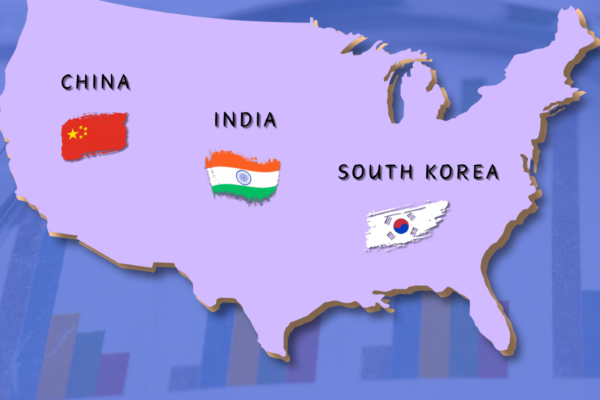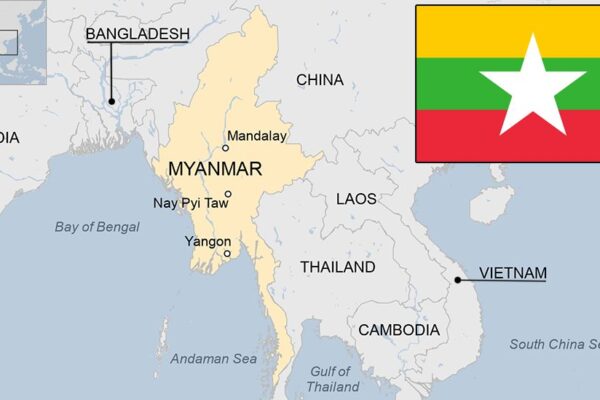Exiled Tibetan political leader honored with democracy medal
The leader of Tibet’s government-in-exile on Thursday won the Democracy Service Medal from the U.S.-based National Endowment for Democracy, recognizing Sikyong Penpa Tsering’s commitment to advancing democracy and promoting the dignity of the Tibetan people. In his acceptance speech, Tsering dedicated the award to Tibetans inside Tibet and in exile, and to the Dalai Lama, acknowledging the Tibetan Buddhist spiritual leader’s role in defending democracy and human rights for all Tibetans. “I am an ordinary person, but His Holiness the 14th Dalai Lama is the architect and spirit behind everything that we are now or what we have today,” he said. during the award ceremony at the U.S. Chamber of Commerce in Washington. “This award is for the people I serve,” said Tsering, who is head of the Central Tibetan Administration. The award, which honors people defending democracy worldwide, was also given to former U.S. House Speaker Nancy Pelosi, Senate Republican leader Mitch McConnell, Russian opposition leader Vladimir Kara-Murza and Free Belarus leader Sviatlana Tsikhanouskaya. The Dalai Lama reacts after receiving the National Endowment for Democracy’s Democracy Service Medal during a ceremony at the Library of Congress in Washington, Feb. 19, 2010. (Jason Reed/Reuters) Since taking office after winning the 2021 democratic elections which saw a 77% voter turnout, Sikyong Penpa Tsering has worked to counter Chinese influence and mobilised Tibet’s allies to speak up against the suppression of cultural identity within Tibet, said Castro. “In recognition of those efforts, it’s my honour to present the 2024 democracy service medal to Sikyong Penpa Tsering on behalf of the National Endowment for Democracy. Also on Thursday, the Tibet Action Institute received the endowment’s Democracy Award for its work in documenting the Chinese Communist Party’s efforts to erase Tibetan children’s identity by forcibly enrolling them in state-run boarding schools in Tibet. The Regional Center for Human Rights and the Waey Organisation also received the Democracy Award. The National Endowment for Democracy, founded in 1983, promotes democracy worldwide through grants funded primarily by the U.S. Congress. Resolve Tibet Act The ceremony came a day after the U.S. Congress passed the Resolve Tibet Act, urging China to resolve the Tibet-China dispute through dialogue. It now awaits President Joe Biden’s signature to become law. It calls on Beijing to resume dialogue with the Dalai Lama, who is the spiritual leader of Tibet, and other Tibetan leaders about how Tibet is governed. No formal talks have taken place since 2010. The National Endowment for Democracy’s Democracy Service Medal is pictured before being presented to the Dalai Lama at the Library of Congress in Washington, Feb. 19, 2010. (Jason Reed/Reuters) Tsering welcomed the passage of the bill and expressed hope that Biden would sign it into law soon. He also confirmed that a congressional bipartisan delegation led by Rep. Michael McCaul and which includes Pelosi, is set to meet with the Dalai Lama and Central Tibetan Administration leaders in India on June 19. Tsering also presented Pelosi — a long-time Tibet supporter and strong China critic — with her award, while lauding her unwavering fight for democracy, and against authoritarianism, everywhere. Pelosi commended the endowment for its efforts to highlight global injustices. “One of the cruelest tactics used by oppressors is to imprison people and make them disappear, hoping they will be forgotten.” she said. “But we do not forget them,” she said. “Our members of Congress, in a bipartisan manner, consistently raise their names—whether on the House floor, in meetings with heads of state, or during visits to other countries.” Additional reporting by Yeshi Tashi and Tenzin Pema. Edited by Eugene Whong and Malcolm Foster.



